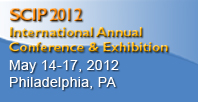|
|
||
 |
||
|
|
REAL-TIME COMPETITIVE INTELLIGENCE TOOLS Let Their Words Do the Talking: Verbal Cues to Detect Deception Over the Telephone
Detecting Deception over the Telephone I hear the voice coming through the telephone receiver, but I am not sure the person at the other end is telling the truth. Without visual cues, detecting deception becomes more difficult, but not impossible. Deep budget cuts have forced many companies to use the telephone to conduct business instead of face-to-face meetings. Mastering skills to detect deception over the telephone safeguards against people who intend to lie to you or to take advantage of you. Several techniques will be presented to help determine the veracity of the person at the other end of the telephone. These techniques will be particularly helpful for investigators who have to conduct telephone interviews. Remember, no deception technique is 100 percent reliable. These techniques will only provide you with a probability of deception, not a certainty of deception. Establish a Baseline A baseline can be established during the first few minutes of a conversation. A baseline consists of verbal patterns and paralinguistic cues of the person to whom you are talking. The best method to establish a baseline is to engage the person in social pleasantries such as the weather or other neutral topics and catalogue the person's speech patterns and paralinguistic cues. The baseline is established during the part of the conversation when the person you are talking to has no reason to lie. Later, during the conversation, you can listen for any deviations from the person's baseline. Deviations from the baseline indicate a degree of anxiety. Various factors can cause anxiety, including deception. One deviation from the baseline does not indicate deception. Look for a cluster of baseline changes before concluding deception. Deviation clusters typically occur during deception. Response Time Liars have longer response times than truth tellers. Truthful people simply answer questions; however, liars typically need extra time to formulate their answers to ensure that they appear truthful. A person's response time to "hot" questions can be compared with the baseline response time established at the beginning of the conversation. If the response time is longer, then deception is possible. Truthful people could take longer to answer a question if the question requires thought. To reduce the possibility of false positives, use the "Well" technique. When you ask someone a direct "yes" or "no" question and they begin their response with the word "well," it means they are about to give you an answer they know you are not expecting. This technique only works with direct "yes" or "no" questions. I used this technique recently to determine if the projector problems were resolved for an upcoming speech I was giving. The conversation went something like this. Me: Hi, my name is Jack Schafer. I am scheduled to speak at the convention tomorrow. I was told that there were some problems with the projector for my slide presentation. Have those problems been resolved? Event Coordinator: (Slight pause) Well, (Slight pause) they told me that everything has been taken care of. Based on the event coordinator's "Well" response to my direct "yes" or "no" question, I was reasonably certain that the problems with the projector had not been resolved. The coordinator knew I was expecting a "yes" answer. Her "well" response indicated that she was going to give me an answer other than "yes." The coordinator displayed three indicators of deception, speech latency, failing the "Well Technique," and the answer was evasive. (Evasive answers will be discussed later.) This cluster indicated that there was a high probability of deception. Rather than call the coordinator on the deception, I carried a projector with me, just in case. Word Fillers Liars need time to construct believable answers. To gain extra time, liars often use Word Fillers such as "umm," "ah," and "uh huh" before responding. Another method liars use to gain extra time is to answer a question with a question or ask the speaker to repeat the question. Truthful people seldom need extra time to answer simple questions. Using this technique is less effective in today's society because cell phone reception can be spotty requiring the need to ask for the question to be repeated. Again, no one technique can detect deception. Look for clusters and clusters or deceptive indicators. Evasive Answers Liars have difficulty providing direct answers to direct questions. Liars will use a variety of techniques to avoid answering direct questions. If you suspect deception, ask the person a direct "yes" or "no" question. If the person does not provide you with a direct answer, then the probability of deception increases. If the person pauses before answering the question, probability of deception significantly increases. If the person answers the question with the word "well," deception is very likely. These responses form a cluster of cues that indicate a high probability of deception. Additional techniques to detect deception can be found in booklets titled Catch a Liar and Fibs to Facts: A Parental Guide to Effective Communication. An in-depth examination of detecting deception can be found in Psychological Narrative Analysis: A Professional Method to Detect Deception in Oral and Written Communications. DePaulo, B. M., Lindsay, J. J., Malone, B. E., Muhlenbruck, L., Charlton, K., & Cooper, H. (2003).Cues to deception. Psychological Bulletin, 129, 74-112. Sporer, S., Schwandt, B. (2006). Paraverbal indicators of deception: A meta-analytic synthesis. Applied Cognitive Psychology, 20, 421-446. About the author John R. “Jack” Schafer, Ph.D. is a professor at Western Illinois University in the Law Enforcement and Justice Administration (LEJA) Department. He is a retired FBI Special Agent. He served as behavioral analyst assigned to FBI's National Security Behavioral Analysis Program. He authored a book titled “Psychological Narrative Analysis: A Professional Method to Detect Deception in Written and Oral Communications.” He also co-authored a book titled “Advanced Interviewing Techniques: Proven strategies for Law Enforcement, Military, and Security Personnel.” He has published numerous articles on a wide range of topics including the psychopathology of hate, ethics in law enforcement, and detecting deception. Dr. Schafer earned his Ph.D. in psychology at Fielding Graduate University, Santa Barbara, California. Dr. Schafer owns his own consulting company and lectures and consults in the United States and abroad.
Reprinted with permission from Psychology Today
|
|
||||||||||||||||||||||||||||||||||||||||||||||||||||||||||||||||||||||||||||||||||||||||||||||||||||||||||||||||||||||||||||||||||||||||||||||||||||||||||||||||||||||||||||||||||||||||||||||||||||||||||||||||||||||||||||||||||||||
|
© 2012 Strategic and Competitive Intelligence Professionals |





